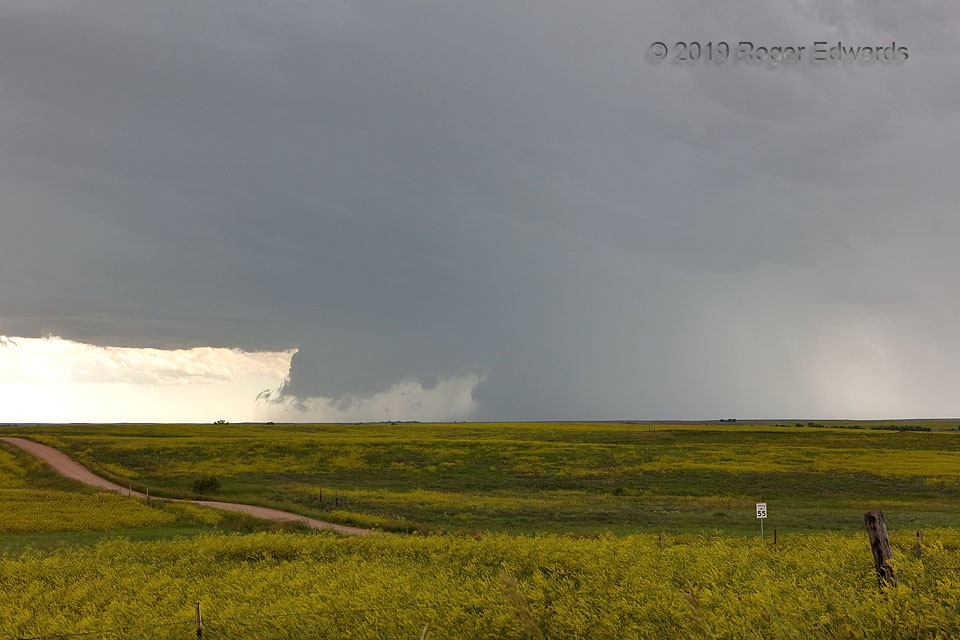The beauty of the wildflower-carpeted rolling Great Plains belied the violence of the messy supercell crossing the distance from right to left, at high velocity. This post-cold-frontal storm moved from north-central Wyoming into southwestern South Dakota and increasing moisture, aiding and abetting a fast-moving, outflow surfing, rotating hail machine, with severe gusts to boot. The front-flank shelf cloud is at middle left, with mesocyclonic wall cloud partly visible through both the intervening forward-flank core and its own wrapping precip. The “eyeball test” here, combined with sparse and awkwardly angled road options, was enough to tell me to bail, even if I had no ability to get radar imagery. Speedy storms that look like this are just not easy nor fun to tangle with, up close and personal. Resembling Pac-Man on radar reflectivity presentations, with a deep and dreadfully vivid hail signature, my decision was validated to let it go, instead of a risky northern approach, trying to “beat it to Chadron”. That maneuver likely would have failed, right through a fast-moving, hard-driving forward flank, then into the vault region of a “hurricane hailer”. Restraint turned out wise for two reasons: 1) the storm had produced estimated 90-mph winds at Ardmore, SD and 2) was about to hurl a measured 64-mph downburst with hail upon Chadron. Later that day, after returning from observing a different, beautiful and also hail-profuse supercell near Martin, I found trees stripped of leaves in Rushville, NE, from this nasty bugger. The following year, I’d observe a similarly southeastward-racing hail and wind machine from the opposite side, and about 90 miles to the northeast of here.
1 ENE Oelrichs SD (9 Jun 19) Looking SW
43.1876, -103.2086
